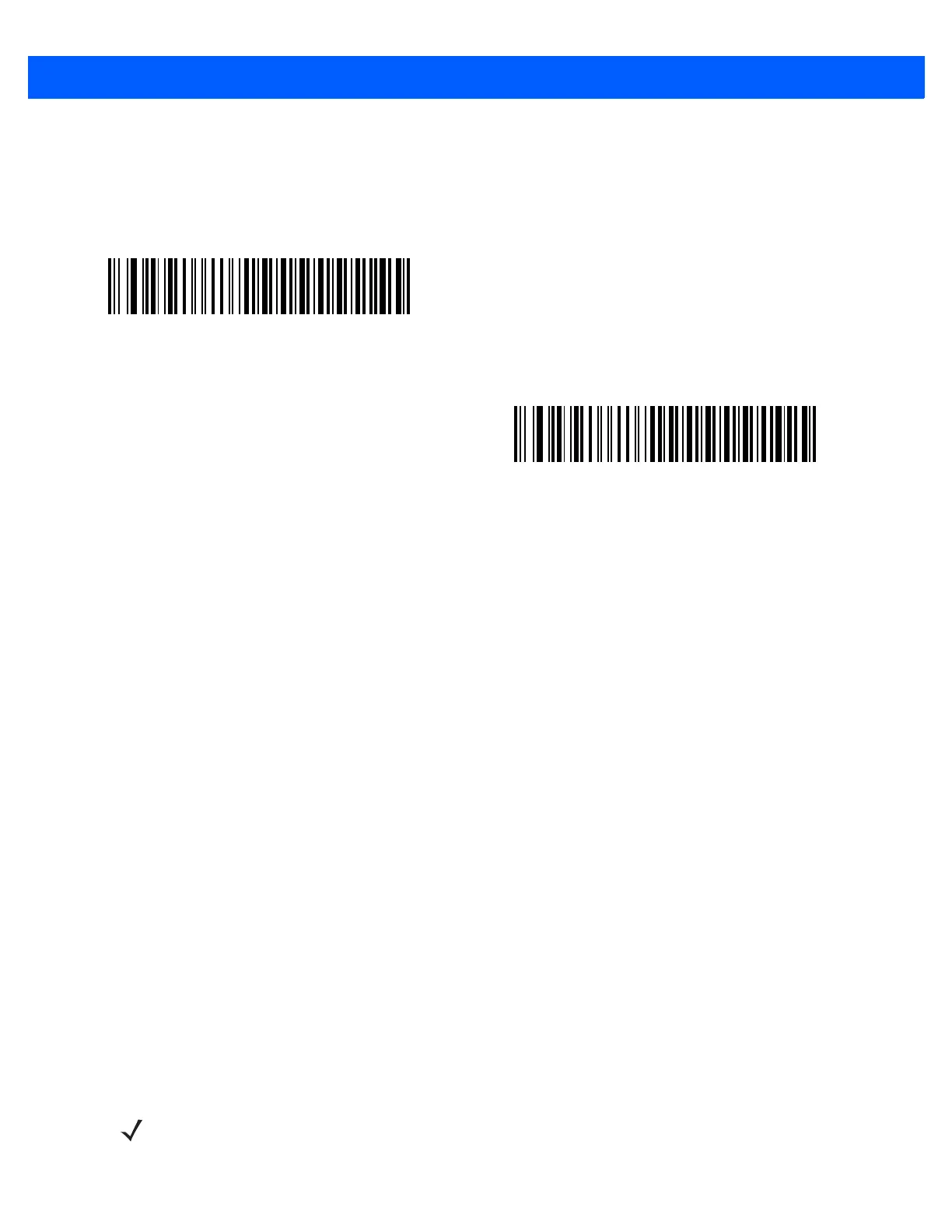8 - 10 DS6878 Product Reference Guide
Check Receive Errors
Select whether or not the parity, framing, and overrun of received characters are checked. The parity value of
received characters is verified against the parity parameter selected above.
Hardware Handshaking
The data interface consists of an RS-232 port designed to operate either with or without the hardware
handshaking lines, Request to Send (RTS), and Clear to Send (CTS).
If Standard RTS/CTS handshaking is not selected, scan data is transmitted as it becomes available. If
Standard RTS/CTS handshaking is selected, scan data is transmitted according to the following sequence:
•
The digital scanner reads the CTS line for activity. If CTS is asserted, the digital scanner waits up to Host
Serial Response Time-out for the host to de-assert the CTS line. If, after Host Serial Response Time-out,
the CTS line is still asserted, the digital scanner sounds a transmit error, and any scanned data is lost.
•
When the CTS line is de-asserted, the digital scanner asserts the RTS line and waits up to Host Serial
Response Time-out for the host to assert CTS. When the host asserts CTS, data is transmitted. If, after
Host Serial Response Time-out, the CTS line is not asserted, the digital scanner sounds a transmit error,
and discards the data.
•
When data transmission is complete, the digital scanner de-asserts RTS 10 msec after sending the last
character.
•
The host should respond by negating CTS. The digital scanner checks for a de-asserted CTS upon the
next transmission of data.
During the transmission of data, the CTS line should be asserted. If CTS is de-asserted for more than 50 ms
between characters, the transmission is aborted, the digital scanner sounds a transmission error, and the data
is discarded.
If the above communication sequence fails, the digital scanner issues an error indication. In this case, the data
is lost and must be rescanned.
If Hardware Handshaking and Software Handshaking are both enabled, Hardware Handshaking takes
precedence.
*Check For Received Errors
(Enable)
Do Not Check For Received Errors
(Disable)
NOTE The DTR signal is jumpered to the active state.

